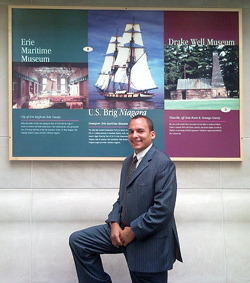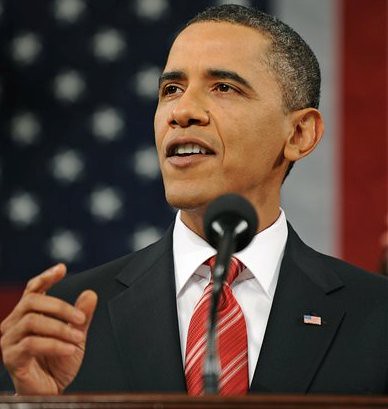GREATER PHILADELPHIA –This March, Campus Philly’s career matching website will be the center of online talent recruitment for the Philadelphia region during its fourth Online Internship Fair. From March 15th-26th, the nonprofit invites area employers to recruit student talent for internship opportunities on CampusPhilly.org/careers, free of charge.
“While the site is live all year, employers can feel confident that local talent will have a presence on the site during our two-week fair,” said Alethia Calbeck, Campus Philly’s director of employer partnerships. The fair will be supported by a marketing campaign to encourage students to post their resumes on the site and actively search for internship opportunities.
innovation DAILY
Here we highlight selected innovation related articles from around the world on a daily basis. These articles related to innovation and funding for innovative companies, and best practices for innovation based economic development.
Q&A: Carmen Scott Dawson, AdVanz LLC
 Carmen Scott Dawson was living the good life. He was No. 1 in sales nationally for his Washington, D.C.-based, multi-national communications company, living with his buddies in a $2 million-plus home, and enjoying everything that comes with being young and successful. Then he developed Lyme disease, which went undiagnosed, rendering his hands useless and severely hampering his ability to walk.
Carmen Scott Dawson was living the good life. He was No. 1 in sales nationally for his Washington, D.C.-based, multi-national communications company, living with his buddies in a $2 million-plus home, and enjoying everything that comes with being young and successful. Then he developed Lyme disease, which went undiagnosed, rendering his hands useless and severely hampering his ability to walk.
Now, almost a decade later, when Dawson talks about what he does, he says proudly: “I’m a disabled entrepreneur.” Back in his hometown of Erie, Dawson is building his own communications and business development firm, AdVanz LLC, and looking to build entrepreneurial resources and networks for minorities, the disabled, immigrants, urban poor, and veterans--populations not always immediately associated with entrepreneurism, but many times among the most well-suited.
AdVanz has served as the state’s director for National Entrepreneurship Week the last three years and also for Global Entrepreneurship Week in 2008. Last week he launched a statewide entrepreneurial mentoring and technical service campaign called UnleashPA, which will run through Feb. 27, the last day of National Entrepreneurship Week. Dawson will be identifying and enlisting 100 mentors to be part of a statewide entrepreneurship leadership team. His Adreamz Institute and Training Center, established through the Cisco Entrepreneurship Institutes, is the first of its kind in North America. Dawson also unveiled his UnleashErie program, with programs at the Booker T. Washington Center and the Urban Erie Development Corporation, among others. He hopes to replicate the program throughout the state, and his supporters include Team PA Foundation CEO Rich Hudic.
Filling the Kansas Entrepreneurial PIPELINE: Entrepreneurs discuss Fellowships
In its third year, the Kansas Pipeline Entrepreneurial Fellowship Program continued its mission to provide some of the state’s most promising startups with the right foundation for further growth.
Executives from eight Kansas businesses were chosen from hundreds of applications and put through a series of quarterly three-day education sessions on subjects ranging from ways to organize their finances to how to improve how they communicate their business to customers and potential investors.
I HAD THE PRIVILEDGE TO BE A NATIONAL JUDGE FOR THE KANSAS PIPELINE iNNOVATOR OF THE YEAR PROGRAM. I PERSONALLY SERVE AS A JUDGE FOR SEVERAL BUSINESS PLAN OR ENTREPRENEUR PROGRAMS AND BELIEVE THAT THE PIPELINE, YEAR LONG IMMERSION PROGRAM, IS ONE OF THE BEST ENTREPRENEURIAL FELLOWSHIP PROGRAMS IN AMERICA.THIS PROGRAM COULD BENEFIT MANY STATES REGIONS AND COUNTRIES. JONI COBB, ITS PRESIDENT AND CEO, IS WILLING TO DISCUSS SUCH EXPANSION IDEAS WITH THOSE THAT DESIRE TO CREATE A MORE ROBUST ENTREPRENEURIAL ECOSYSTEM. CHECKOUT HIGHLIGHTS FROM THE RECENT INNOVATOR OF THE YEAR PROGRAM WITH THE FOLLOWING BRIEF VIDEO.
RICH BENDIS
The United States of Science: President's Budget Marks a Turning Point for Science
 When future American economic and science historians assess the course of the nation in the early 21st century, they might well identify February 1, 2010, as a landmark date. The reason is the juxtaposition of numbers in the Obama administration’s federal budget for fiscal year 2011, beginning this October. One set of numbers tackles the threat posed by ever-rising federal deficits to our country’s long-term stability, and the other set provides the financial wherewithal for sustained economic recovery based on science and education.
When future American economic and science historians assess the course of the nation in the early 21st century, they might well identify February 1, 2010, as a landmark date. The reason is the juxtaposition of numbers in the Obama administration’s federal budget for fiscal year 2011, beginning this October. One set of numbers tackles the threat posed by ever-rising federal deficits to our country’s long-term stability, and the other set provides the financial wherewithal for sustained economic recovery based on science and education.
Behind the numbing fiscal calculations in the budget, the president faces up to the reality of a national government that must bring down a fiscal deficit that stretches as far as the eye can see. What is truly sobering is the possibility that our long-term budget challenges might lead to a crisis of confidence in the U.S. economy that could at some time not only wreak more havoc on the financial markets, but lead to the kind of unrest that fosters political extremism and international conflict. The steps taken by the Obama administration in the FY 2011 budget are the right way to go. The new budget will boost our economy in the short term to ensure tax revenues rise amid a broad economic recovery while also trimming government spending where it is least effective to bring down the deficit over the medium to long term.
Patents ‘ American Greatness
 We all know what a patent is in general, but how much do you really know about patents and how they have shaped America? Our advances in technology here in America have surpassed that of all other countries combined. Many do not like to hear that, but it is a fact, and it has more to do with how America moved ahead of other countries economically than any other factor and still does today.
We all know what a patent is in general, but how much do you really know about patents and how they have shaped America? Our advances in technology here in America have surpassed that of all other countries combined. Many do not like to hear that, but it is a fact, and it has more to do with how America moved ahead of other countries economically than any other factor and still does today.
In this article, I will cover many of the advances made by American Inventors throughout our relatively short history compared to other countries.
Not all inventions that helped make America great were originated in America, but even those that were not invented and patented here, were put to better use here, like a way to produce steel in large quantities for instance. Originally patented by a British inventor named Henry Bessemer. He invented the Bessemer Converter or the Bessemer Process.
Register now for the Community Development Venture Capital Alliance 2010 Annual Conference
 Register now for the Community Development Venture Capital Alliance 2010 Annual Conference, to be
eld on Thursday and Friday, March 25 and 26 in New Orleans, LA. The Annual Conference is the premier training and networking event for anyone interested in developmental venture capital. An introductory workshop precedes the conference on Wednesday, Marc
24. Attending this event provides an in-depth look at leading funds and best practices in the industry, and serves as the ideal entry point to the conference as a whole. Go to our website for more information: www.cdvca.org/conference.
Register now for the Community Development Venture Capital Alliance 2010 Annual Conference, to be
eld on Thursday and Friday, March 25 and 26 in New Orleans, LA. The Annual Conference is the premier training and networking event for anyone interested in developmental venture capital. An introductory workshop precedes the conference on Wednesday, Marc
24. Attending this event provides an in-depth look at leading funds and best practices in the industry, and serves as the ideal entry point to the conference as a whole. Go to our website for more information: www.cdvca.org/conference.
The Community Development Venture Capital Alliance (CDVCA) is the network for the rapidly growing field of community development venture capital (CDVC) investing. CDVC funds provide equity capital to businesses in underinvested markets, seeking market-rate financial returns, as well as the creation of good jobs, wealth, and entrepreneurial capacity.
The Business: The government's role in entrepreneurship
![]() The Guardian's Dan Roberts speaks to Harvard's Josh Lerner about entrepreneurship and venture capital
The Guardian's Dan Roberts speaks to Harvard's Josh Lerner about entrepreneurship and venture capital
In an extended interview, Josh Lerner, professor of investment banking at Harvard Business School, discusses the role of government in entrepreneurship and venture capital.
The Guardian's head of business Dan Roberts also asks him about the role of Asian economies, teaching business ethics and if the global investment banking system is in need of reform.
Prof Lerner's book Boulevard of Broken Dreams is out now.
Have a listen to the podcast, and post your comments on the blog below.
Obama Finds Favor on Wall Street Training Entrepreneurs
 President Obama may be talking tough with Wall Street, but on one issue they both agree: They like the nonpartisan Network for Teaching Entrepreneurship (NFTE), an organization dedicated to nurturing entrepreneurship among youth in low-income communities.
President Obama may be talking tough with Wall Street, but on one issue they both agree: They like the nonpartisan Network for Teaching Entrepreneurship (NFTE), an organization dedicated to nurturing entrepreneurship among youth in low-income communities.
President Obama and NFTE award winners
NFTE, founded in 1987 by Steve Mariotti, a businessman and teacher from the toughest, most crime-ridden schools in New York City, has tapped into goodwill from all sides of the political spectrum for a cause that counts.
Mariotti discovered that the best way to put at-risk kids’ feet on the right path -- the path to real ownership and success -- is by teaching them how to become business owners.
Entrepreneurship and the Economy
 As one looks around the economic landscape I am struck by the devastation. One number stands out above all others. One in five males between the ages of 25 and 55 is out of work! That is a staggering number. The numbers are not going back to anything “normal” anytime soon according to the IMF. Financial crises followed by recessions do not return to normal levels of employment for over a decade. Why you might ask? The answer I guess is that the levels of debt need to be worked down. Everyone owes everyone money and none pay anyone. Second, the recession destroys real capital. In this situation it was housing. It will take years to work off the excesses of the housing crisis.
As one looks around the economic landscape I am struck by the devastation. One number stands out above all others. One in five males between the ages of 25 and 55 is out of work! That is a staggering number. The numbers are not going back to anything “normal” anytime soon according to the IMF. Financial crises followed by recessions do not return to normal levels of employment for over a decade. Why you might ask? The answer I guess is that the levels of debt need to be worked down. Everyone owes everyone money and none pay anyone. Second, the recession destroys real capital. In this situation it was housing. It will take years to work off the excesses of the housing crisis.
So what does entrepreneurship have to do with the recession? If we take what we know today, entrepreneurs and innovation play a vital role in the economy. But can they help us in the great recession? In other words, what policy should we be pursuing to move the unemployment rate below 10 percent and back into the neighborhood of 5 percent? We know that new firms are important. They create most of the net jobs. However, only a small percent, perhaps 4 percent, create almost all of the jobs in any given four-year period. And this seems to hold up in different times, different countries, and different industries.
For jobs, look to university spin-offs
 (CNN) -- On Monday, President Obama introduced his much-anticipated federal budget for fiscal year 2011. And as America reviews the plan, few issues will be as critical as how it addresses job creation.
(CNN) -- On Monday, President Obama introduced his much-anticipated federal budget for fiscal year 2011. And as America reviews the plan, few issues will be as critical as how it addresses job creation.
Fortunately, an opportunity to solve our job crisis lies right under our noses.
Currently, the federal government is investing nearly $50 billion a year on university research -- yet barely a dime on university programs to help translate the most promising ideas into new businesses and employment opportunities. That's like turning up the water pressure but never opening up the faucet.
Thought leaders in academia, industry, and the public sector have collaborated to develop a policy proposal called IMPACT, which I recently presented at a forum on Capitol Hill. This proposal would expand our country's capacity to harness innovation to create real impact -- impact in the form of high-paying jobs.
Dear friends,
I wanted to share some great news. As you may know, the Federal budget came out on Monday. In it, theres a significant item that I believe will dramatically improve job creation by supporting university innovation.
Currently, the federal government invests nearly $50 billion a year on university research -- yet very little on university programs to help translate the most promising ideas into new businesses and employment opportunities.
In a recent column for CNN, I outlined a specific policy proposal for how the federal government can catalyze economic growth and societal benefit with ideas spawned at major research universities. The IMPACT proposal, which I authored last summer at the urging of the White House Office for Science and Technology Policy, is an initiative that would translate the most promising innovations into new products, services, and start-ups; increase engagement of faculty and students in the innovation and entrepreneurship process; and enhance regional innovation ecosystems around universities.
So, the great news is that the proposal made it into the National Science Foundations budget as an expansion of their Partnerships for Innovation program! In the FY 2011 budget, $12 million will be invested in a new NSF Innovation Ecosystem competitive grant program.
The key to the program is that it is modest in cost yet big on impact, because it leverages the resources we already have in higher education. It focuses on what a university does best -- generating groundbreaking ideas, teaching lifelong innovators, and serving as a nexus for the local community. Ultimately, we hope that it scales to every corner of the country.
We know first-hand that these initiatives create jobs and economic prosperity. For example, in the last two years 16 USC spinouts raised at least $148 million in financing. These companies employ approximately 500 full-time employees, more than half locally in Los Angeles.
Now that the proposal is in the federal budget, I could use your help. Please spread the word with your colleagues! We need to gain more awareness and popular support behind the idea as Congress prepares to consider the budget in the coming months.
Thanks for your help!
--Z
The CNN article can be found here: http://bit.ly/acFPJl
Impact Paper can be found here: http://bit.ly/IMPACT
The White House OTSP Budget Highlights can be found here: http://bit.ly/WHBudget
Innovation Metrics of Leading Companies
 I have often shunned the idea of metrics for innovation as it has been very difficult finding companies being good at this.
I have often shunned the idea of metrics for innovation as it has been very difficult finding companies being good at this.
However, I believe it is important to work this out in order to raise the innovation productivity and in this post I share some input from a couple of large corporations based on a discussion on LinkedIn last year.
The discussion was started by Jimm Feldborg, who is R&D Manager at Grundfos in China. Jimm pointed out that a good start is to understand whether your indicator is a:
Turkish university embraces technology with ‘business angels’
 Aiming to promote the concept of “business angels” in Turkey, a leading university in Ankara has established Turkey’s first business angel network association to support early-stage technology entrepreneurs.
Aiming to promote the concept of “business angels” in Turkey, a leading university in Ankara has established Turkey’s first business angel network association to support early-stage technology entrepreneurs.
“Our aim is to develop the business angel sector in Turkey and boost technology-based economic development. Turkey should be a technology producer, not a consumer, an important precondition for the welfare of the country in the medium and long run,” Middle Eastern Technical University, or METU, President Ahmet Acar told the Hürriyet Daily News & Economic Review.
Once used in the art world to describe wealthy individuals who provided money for theatrical productions, the term business angel, also known as an investor angel, now refers to qualified, experienced and affluent businesspeople who provide capital, expertise, managerial assistance and a network for early-stage entrepreneurs to solve their initial financing problems and help establish their firms in the marketplace.
Biomedical jobs appear to be ‘recession resilient’
![]() Employment in California’s biomedical industry has remained fairly stable through the recession, according to a new industry study that also points to numerous challenges on the horizon for the sector.
Employment in California’s biomedical industry has remained fairly stable through the recession, according to a new industry study that also points to numerous challenges on the horizon for the sector.
The report yesterday from the La Jolla-based California Healthcare Institute says the biomedical work force shrank slightly in the 12 months through March 2009 but was still up by more than 1,000 jobs from 2007.
Altogether there were 272,181 jobs in areas that ranged from biopharmaceuticals and medical devices to academic research and laboratory services, according to the report. The industry employed 24,123 people in San Diego County.
Six things you should know before meeting with a US venture capitalist
 Many Australian companies set their capital raising sights on California’s Silicon Valley, as the availability of venture capital funds there is much greater than in Australia. There are many reasons to seek funding in the US, and not all of them involve preparation for entry into the American market (my company, for example, is seeking funding to help us expand into the Indian, Asian and African regions instead of into the US market).
Many Australian companies set their capital raising sights on California’s Silicon Valley, as the availability of venture capital funds there is much greater than in Australia. There are many reasons to seek funding in the US, and not all of them involve preparation for entry into the American market (my company, for example, is seeking funding to help us expand into the Indian, Asian and African regions instead of into the US market).
Today, a growing population of VCs in Silicon Valley hails from Australia, China, India and Singapore, among other countries. And because of this, these US-based investors are more willing than ever to invest in international companies that have a global vision. So even if your intention isn’t to move into the US market itself, the VC community there can still offer major support toward your goal of expanding in other international markets.
Last month, I was given the opportunity to participate in the G’DAY USA Australian Innovation Shoot Out — an event that connects Australian technology startups with investors and potential partners in the United States. There I received the extreme honour of being named Australian Innovator of the Year. Through the experience, I not only established valuable connections with US-based VCs — I also learnt quite a bit about the ins-and-outs of the US venture capital market.
Venture Capital’s Most Trafficked Web Sites
 Venture capitalists often invest in start-ups whose business models are dependent on Internet traffic, or in companies whose technology is geared toward delivering those eyeballs. But how good are VC firms at bringing in their own Web site traffic?
Venture capitalists often invest in start-ups whose business models are dependent on Internet traffic, or in companies whose technology is geared toward delivering those eyeballs. But how good are VC firms at bringing in their own Web site traffic?
Larry Cheng, a partner at Volition Capital (formerly Fidelity Ventures), has ranked 150 venture firms based on their Web sites’ average monthly unique visitors for the fourth quarter, as scored by Compete. This is the second list of its kind compiled by Cheng, who has previously ranked individual VC blogs using the same data.
So who’s at No. 1? It’s not Sequoia Capital, perhaps the best-known venture firm, which ranks at No. 2 with 22,441 uniques. Nor is it the venerable Bessemer Venture Partners, famous for publishing an “anti-portfolio,” coming in at No. 3 (14,825).
Ireland:Getting Hyperlocal with Clonmel Chamber
 ONE OF THE MOST PROACTIVE means of developing the smart economy is starting to unfold between the Clonmel Chamber of Commerce and Tipperary Institute. It looks simple on one level because all you would see is a casual networking session between creative students and curious business owners. But underneath today's two-hour meet-up in Baker's Bar, several creative multimedia students were doing a sanity check of a hyperlocal project. The end result is relatively simple: to produce a series of 80-second internet-ready video clips about Tipperary. Underneath the surface, we're testing a premise of "breakthrough creativity" as we seek out the headwaters of truly innovative ideas. Gabriela Avram first alerted me to the concept during a Limerick OpenCoffee meeting nearly two years ago. Since that time, I've concluded that the creative economy has started to replace the knowledge economy because business leaders increasingly rely upon innovation rather than productivity as the key to expansion. In the case of my timetabled hours with students, I will gladly count as "complete" a project specification that emerges 20 minutes into a two-hour tutorial since that deliverable marks a defined milestone. There's no need to sit around for another hour and a half playing with a deliverable that's ready for working.
ONE OF THE MOST PROACTIVE means of developing the smart economy is starting to unfold between the Clonmel Chamber of Commerce and Tipperary Institute. It looks simple on one level because all you would see is a casual networking session between creative students and curious business owners. But underneath today's two-hour meet-up in Baker's Bar, several creative multimedia students were doing a sanity check of a hyperlocal project. The end result is relatively simple: to produce a series of 80-second internet-ready video clips about Tipperary. Underneath the surface, we're testing a premise of "breakthrough creativity" as we seek out the headwaters of truly innovative ideas. Gabriela Avram first alerted me to the concept during a Limerick OpenCoffee meeting nearly two years ago. Since that time, I've concluded that the creative economy has started to replace the knowledge economy because business leaders increasingly rely upon innovation rather than productivity as the key to expansion. In the case of my timetabled hours with students, I will gladly count as "complete" a project specification that emerges 20 minutes into a two-hour tutorial since that deliverable marks a defined milestone. There's no need to sit around for another hour and a half playing with a deliverable that's ready for working.
Budgeting for Science and Technology - Obama's budget lays foundation for innovation-driven growth
“I do not accept second place for the United States of America,” President Obama said last week in his State of the Union address. Speaking of investments that countries like China, Germany, and India are making in their innovative economies, the president was clear: “These nations, they’re not standing still. These nations aren’t playing for second place. They’re putting more emphasis on math and science. They’re rebuilding their infrastructure. They’re making serious investments in clean energy because they want those jobs.”
Fortunately, the budget request for fiscal year 2011 that the Obama administration released on Monday includes foundational investments that will help the United States remain the leader among innovative nations. Congressional leaders should support the president’s vision by adopting these investments in their budget later this year.
New Book: Innovation, Intellectual Property, and Economic Growth
The new book Innovation,
Intellectual Property, and Economic Growth, by
Christine Greenhalgh & Mark Rogers, looks interesting:
What drives innovation? How does it contribute to the growth of firms, industries, and economies? And do intellectual property rights help or hurt innovation and growth? Uniquely combining microeconomics, macroeconomics, and theory with empirical analysis drawn from the United States and Europe, this book introduces graduate students and advanced undergraduates to the complex process of innovation. By addressing all the major dimensions of innovation in a single text, Christine Greenhalgh and Mark Rogers are able to show how outcomes at the microlevel feed through to the macro-outcomes that in turn determine personal incomes and job opportunities.
From a quick skim of ch. 1 (available here), it appears to adopt a mainstream approach--finding out whether there is market failure or a public goods problem (see Hans-Hermann Hoppe's "Fallacies of the Public Goods Theory and the
Production of Security," in The Economics and Ethics of Private Property for criticism of the concept of "public goods"), and then asking whether we can fix it with some kind of state invervention. The same old "the market is not perfect, so let's let the thugs with guns have more power" song and dance.
Taking invention from the lab to the marketplace
 There is no shortage of technological development aimed at cleantech solutions. At academic institutions, nonprofit R&D facilities, and private and government-funded laboratories, researchers, scientists and engineers are working on innovations for alternative energy, batteries, biofuels, smart-grid and other energy-efficiency solutions, just to name a few.
There is no shortage of technological development aimed at cleantech solutions. At academic institutions, nonprofit R&D facilities, and private and government-funded laboratories, researchers, scientists and engineers are working on innovations for alternative energy, batteries, biofuels, smart-grid and other energy-efficiency solutions, just to name a few.
The challenge for cleantech investors is identifying those inventions that can successfully address specific pain in the energy and environmental marketplaces and also offer strong potential for the market adoption that leads to successful commercialization.
Such scientific development is taking place at the U.S. Department of Energy (DOE) National Laboratories, where tens of thousands of scientists and engineers perform cutting-edge research in world-class facilities. In March 2009, the DOE announced $1.2 billion in new science funding under the American Recovery and Reinvestment Act for major construction, laboratory infrastructure, and research efforts sponsored across the nation by the DOE Office of Science, which manages 10 National Labs and funds research at another seven. (The Wall Street Journal reported on Nov. 25 that the total science office budget is now $4.76 billion.)
KEF IS A FELLOW NATIONAL ASSOCIATION OF SEED AND VENTURE CAPITAL (NASVF) BOARD MEMBER AND GETS IT.
RICH BENDIS
President’s Budget Aims to Recharge Regional Innovation
![]() Investing in innovation is a critical component of long-term economic prosperity, and the president’s FY2011 budget request includes two notable provisions that will support regional science and technology clusters.
Investing in innovation is a critical component of long-term economic prosperity, and the president’s FY2011 budget request includes two notable provisions that will support regional science and technology clusters.
The administration is asking for $75 million “to support the creation of regional innovation clusters that leverage regions’ competitive strengths to boost job creation and economic growth,” a goal Jonathan Sallet, Ed Paisley, and Justin Masterman championed in the Science Progress report, “The Geography of Innovation.” Part of the key to this approach is that is allows policymakers to pay close attention to regional strengths. As the report authors explain: “Geographic regions that are bound together by a network of shared advantages create virtuous cycles of innovation that succeed by emphasizing the key strengths of the local businesses, universities and other research and development institutions, and non-profit organizations.”


